We went south in the morning to visit Mont-Saint-Michel. It was very quiet on the road being National day although we did see two 3 wheeled motorbikes towing caravans. The numbers picked up once we turned off the motorway and passed all the hotels, campsites and eating places on the way to the abbey. We were early enough to get a good park although there were warnings that cars had to be moved before 7.30pm because the area would be covered by sea.
Damien had advised us to be there early as the Mont is the second most visited place in France after Paris
. He also said only half the visitors actually go to the Abbey which we did find strange although the walkup was reasonably long and steep. There were no queues at this time so we got our audio guides, put away our jackets and started our self guided tour.
The Abbey is built on the top of a natural rocky outcrop that is surrounded by the sea and 2 rivers. It began as a sanctuary to the Archangel Michel and became a Benedictine abbey in the 10th century.
The village grew up at the foot of the Abbey and filled the rock as it was long a site for pilgrims to visit. It is also a fortress that withstood the English in the 100 years war. The religious community was dissolved in the Revolution and the site used as a prison, but in 1874 it was deemed a National monument and restoration started. In 1969 a small number of Benedictine monks restarted a community at the Abbey.
The terraces on the abbey gave a great view of the belfry of the abbey (which had bells ringing as we arrived and when we left) and down to the causeway which had been the way into the town
. The views out to sea were limited by the cloudy weather. We also had nice views from the cloisters which were a bit further around. There were a number of people sitting here writing postcards. The religious statues, including Francis of Assisi, were destroyed during the Revolution.
In many of the rooms inside we were told how, in the past a lot of colour would have been in the rooms. The walls would have had tapestries and hangings and some of the plaster would have had colourful designs. Today they are all bare and rather stark but this does allow you to see how well built the whole place is. The pillars are big, some of 5 m circumference, often going deep into the ground and also supporting a floor above.
The monks' refectory was above the Guest Hall. Both are very big, with huge fireplaces and with good natural light. The refectory would have been silent except for one monk reading from the bible – the Guest Hall was often filled with royal and noble guests
. The refectory had a wooden ceiling which was unusual but would have been much lighter than the more usual stone, so allowing the 58 tall bay windows.
The room below the cloister also had good natural light and was built as the monks’ work and study room. Manuscripts over 1000 years old have been preserved and are kept in a nearby town. The church was at the top of the abbey with high ceilings and there are a number of chapels at other levels. There was also a large wheel that actually was part of a lift system when the abbey was a prison. There had also been another lift built in the abbey in the 13th century.
There were tour groups in some areas of the Abbey, but the place was so big that it was not an issue for us. The audio gave us all the information we needed.
We walked back through the shopping area and picked up some snacks as well as being able to post a few cards. Everything seemed to be open
.
After we left Mont-Saint-Michel we went to a German cemetery that was near the BnB (I had spotted a sign on our way out). We had intended to go to one and then I also realised there was a cache there. This cemetery was completely different from the US one. We were also the only people there which also made it a very different experience.
There had been over 3000 US soldiers buried here but their bodies had been moved to the US cemetery and other German bodies moved here so it now has over 11,000 Germans. The plots all seemed to have 2 bodies which we thought was nice (to be buried with a mate).
There were groups of three dark granite crosses in spots and a lot of big trees but the main thing you noticed were the big plots of flat flower beds. At the entrance there was a book to sign and make comments in. The visitors seemed to be mainly non German. Most of the entries were thoughtful but a few were quite harshly anti German
. There was a notice saying the cemetery is tended by students as part of their learning about the horrors of war.
After a break back at the BnB we went to Pointe du Hoc, the cliff area that the US Rangers had to take as part of the D Day invasion. There were German guns on the top covering the sea, Utah and Omaha beaches so it was a crucial spot.
We arrived and it soon started to rain very heavily. We ended up taking refuge in one of the old gun emplacements with another group from the Netherlands and Belgium. The area was still full of craters from the intensive bombing from that time and was in some ways the most real of the places we visited. The main memorial was blocked off as it is being extended but that didn’t matter. We clambered around for a while and had to take cover a couple more times although I was still soaked. There was a cache here that we found in one of the breaks in the rain which was a specail bonus.
Then we went to the nearby town to the Ranger museum which was advertised at the .
This was a very small museum. It had one big room with the history of the unit and a few cabinets of memorabilia. A lot of emphasis was made about the rigour of the training and credit given to British commandos for this. Upstairs we watched a documentary of the attack on D day. Then we left just as it closed.
We stopped at a nearby park to take a photo of an interesting Peace Statue then were back for an early tea at 7.15pm. We went to the hotel we had eaten at on the first day but upgraded to the Seasonal Menu so John could have snails and steak while I had 5 varieties of pork then chicken in a wine sauce.
When we arrived back Steve and Damien were in the kitchen with friends of theirs who had booked in under a false name. The Swedish couple soon arrived as well – they had also been to Mt St Michel but had also had a round of golf for only 50 euro each!! We were offered calvardes (sp?), the local apple equivalent of schnapps and after finishing a blog had a chat with the others about the delights of Normandy and the sadness of war.
Mont Saint Michel and Battlefields
Wednesday, July 14, 2010
 Méautis, Basse-Normandie, France
Méautis, Basse-Normandie, France
Other Entries
-
40Settling in at Cupramontana
Jun 2717 days prior Cupramontana, Italyphoto_camera11videocam 0comment 0
Cupramontana, Italyphoto_camera11videocam 0comment 0 -
41Sun, sand and Sirolo
Jun 2816 days prior Cupramontana, Italyphoto_camera7videocam 0comment 0
Cupramontana, Italyphoto_camera7videocam 0comment 0 -
42Discovering Umbria
Jun 2915 days prior Cupramontana, Italyphoto_camera6videocam 0comment 0
Cupramontana, Italyphoto_camera6videocam 0comment 0 -
43Taking notes in Fabriano
Jun 3014 days prior Cupramontana, Italyphoto_camera3videocam 0comment 0
Cupramontana, Italyphoto_camera3videocam 0comment 0 -
44Mountain Monastery
Jul 0113 days prior Cupramontana, Italyphoto_camera11videocam 0comment 0
Cupramontana, Italyphoto_camera11videocam 0comment 0 -
45A lazy Le Marche day
Jul 0212 days prior Cupramontana, Italyphoto_camera5videocam 0comment 0
Cupramontana, Italyphoto_camera5videocam 0comment 0 -
46Welcome to Florence
Jul 0311 days prior Florence, Italyphoto_camera10videocam 0comment 0
Florence, Italyphoto_camera10videocam 0comment 0 -
47Discovering Florence
Jul 0410 days prior Florence, Italyphoto_camera12videocam 0comment 1
Florence, Italyphoto_camera12videocam 0comment 1 -
48Tunnels and tolls
Jul 059 days prior Villarodin-Bourget, Francephoto_camera4videocam 0comment 2
Villarodin-Bourget, Francephoto_camera4videocam 0comment 2 -
49Ascending the Alps
Jul 068 days prior Villarodin-Bourget, Francephoto_camera29videocam 0comment 0
Villarodin-Bourget, Francephoto_camera29videocam 0comment 0 -
50From mountains to motorways
Jul 077 days prior Toulouse, Francephoto_camera6videocam 0comment 0
Toulouse, Francephoto_camera6videocam 0comment 0 -
51The fleas that tease....
Jul 086 days prior Toulouse, Francephoto_camera9videocam 0comment 2
Toulouse, Francephoto_camera9videocam 0comment 2 -
52Back to Basics
Jul 095 days prior La Bessede, Francephoto_camera11videocam 0comment 0
La Bessede, Francephoto_camera11videocam 0comment 0 -
53Living on the River
Jul 104 days prior Loches, Francephoto_camera11videocam 0comment 0
Loches, Francephoto_camera11videocam 0comment 0 -
54Chateaus and caches
Jul 113 days prior Loches, Francephoto_camera14videocam 0comment 0
Loches, Francephoto_camera14videocam 0comment 0 -
55A rewarding search
Jul 122 days prior Méautis, Francephoto_camera6videocam 0comment 0
Méautis, Francephoto_camera6videocam 0comment 0 -
56The Normandy Beaches
Jul 131 day prior Méautis, Francephoto_camera21videocam 0comment 0
Méautis, Francephoto_camera21videocam 0comment 0 -
57Mont Saint Michel and Battlefields
Jul 14 Méautis, Francephoto_camera18videocam 0comment 0
Méautis, Francephoto_camera18videocam 0comment 0 -
58Biking in Bruges
Jul 151 day later Bruges, Belgiumphoto_camera10videocam 0comment 3
Bruges, Belgiumphoto_camera10videocam 0comment 3 -
59Bruges and beyond
Jul 162 days later Bruges, Belgiumphoto_camera27videocam 0comment 0
Bruges, Belgiumphoto_camera27videocam 0comment 0 -
60Flander's Fields
Jul 173 days later Bruges, Belgiumphoto_camera21videocam 0comment 1
Bruges, Belgiumphoto_camera21videocam 0comment 1 -
61Living by the canal
Jul 184 days later Schoorldam, Netherlandsphoto_camera26videocam 0comment 0
Schoorldam, Netherlandsphoto_camera26videocam 0comment 0 -
62Driving in the North Sea?
Jul 195 days later Bremen, Germanyphoto_camera9videocam 0comment 2
Bremen, Germanyphoto_camera9videocam 0comment 2 -
63Discovering Bremen with Peter
Jul 206 days later Bremen, Germanyphoto_camera27videocam 0comment 1
Bremen, Germanyphoto_camera27videocam 0comment 1 -
64Checking out Hamburg
Jul 217 days later Bremen, Germanyphoto_camera18videocam 0comment 0
Bremen, Germanyphoto_camera18videocam 0comment 0 -
65A trying day to Trier
Jul 228 days later Trier, Germanyphoto_camera3videocam 0comment 0
Trier, Germanyphoto_camera3videocam 0comment 0 -
66The Chartres Illuminations
Jul 239 days later Chartres, Francephoto_camera16videocam 0comment 0
Chartres, Francephoto_camera16videocam 0comment 0 -
67Arriving in Paris
Jul 2410 days later Paris, Francephoto_camera6videocam 0comment 0
Paris, Francephoto_camera6videocam 0comment 0 -
68Our Tour de Paris
Jul 2511 days later Paris, Francephoto_camera17videocam 0comment 1
Paris, Francephoto_camera17videocam 0comment 1 -
69One evening in Paris
Jul 2612 days later Paris, Francephoto_camera12videocam 0comment 0
Paris, Francephoto_camera12videocam 0comment 0 -
70Arriving 'home' in London
Jul 2713 days later London, United Kingdomphoto_camera1videocam 0comment 0
London, United Kingdomphoto_camera1videocam 0comment 0 -
71The geocaching geeks of Gunnersbury
Jul 2814 days later London, United Kingdomphoto_camera8videocam 0comment 0
London, United Kingdomphoto_camera8videocam 0comment 0 -
72Goin' to the pikshers and kulture and stuff
Jul 2915 days later London, United Kingdomphoto_camera9videocam 0comment 0
London, United Kingdomphoto_camera9videocam 0comment 0 -
73'Oranges and Lemons...'
Jul 3016 days later London, United Kingdomphoto_camera9videocam 0comment 2
London, United Kingdomphoto_camera9videocam 0comment 2 -
74Locks and castles
Jul 3117 days later London, United Kingdomphoto_camera15videocam 0comment 0
London, United Kingdomphoto_camera15videocam 0comment 0 -
75North to Chelmsford
Aug 0118 days later Chelmsford, United Kingdomphoto_camera5videocam 0comment 0
Chelmsford, United Kingdomphoto_camera5videocam 0comment 0

 Méautis, Basse-Normandie, France
Méautis, Basse-Normandie, France
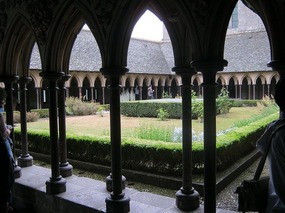
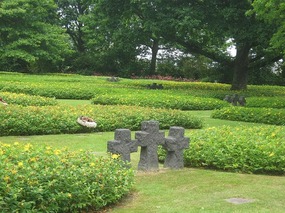

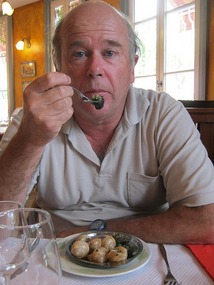






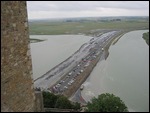
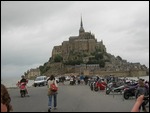
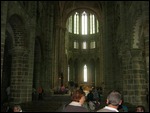
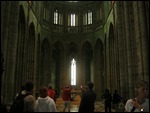
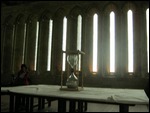
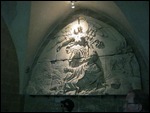

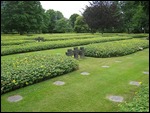
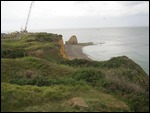
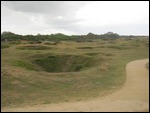

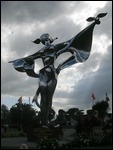
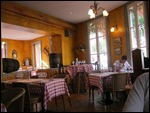
2025-05-22